In February 2022, Sumitomo Forestry Group announced Mission TREEING 2030, our Long-Term Vision with the same target year as our Sustainable Development Goals (SDGs), and Mission TREEING 2030 Phase 1 (2022~2024), our three-year Medium-Term Management Plan to build our vision’s foundation.
Overview of
Mission TREEING 2030,
our Long-Term Vision
Mission TREEING 2030
〜Making our planet safer and more secure for future generations〜
By providing value for the global environment, for people and society, and for the market economy, we at Sumitomo Forestry Group will strive to make our planet safer and more secure for current and future generations of people and all living beings. With our long-held strengths in harnessing and expanding the value of forests and wood, we will create change for a new future.
Three Values and Nine Material Issues
To realize our Long-Term Vision, we identified three values we want to provide – value for the global environment, value for people and society, and value for the market economy. We are committed to promoting business activities that simultaneously enhance all three values without sacrificing any of the other values.

Value for our planet
Material Issue 1
To enhance the value of forests and wood through sustainable forest management
Nurturing forests to enhance and harness the value of wood and other forest resources.
Material Issue 2
To realize carbon neutrality by leveraging forests and wood resources
Contributing to the decarbonization of society by reducing our own GHG emissions, by offering timber and wood products that sequestrate carbon, and by providing low-carbon/carbon-free products and services.
Material Issue 3
To realize a circular bioeconomy by leveraging forests and wood resources
Realizing a circular society by making the most of wood, a renewable and natural resource from the forest ecosystem.

Value for people and society
Material Issue 4
To provide comfortable and secure spaces for society at large.
Providing safe, comfortable and secure spaces to society at large.
Material Issue 5
To improve the livelihood of the local communities where we operate
Creating jobs through our businesses and contributing to the development of local communities.
Material Issue 6
To create a vibrant environment for all workers
Creating a work environment where everyone throughout the supply chain is safe, healthy and motivated.

Value for the market economy
Material Issue 7
To create new markets with forests and wood
Creating new markets that enrich the economy through the resourceful use of forests and wood.
Material Issue 8
To transform markets through DX and innovation
Enhancing economic efficiency and added value through business transformation brought about by DX and innovation.
Material Issue 9
To establish a robust business structure
Contributing to a stable economy by continuously providing value with a structure that is resilient to contingent circumstances.
Business Policy
-
01
Maximizing the value of forests and wood to realize decarbonization and a circular bioeconomy
In addition to reducing operational carbon in all areas domestically and abroad, we will pursue the CO₂ reduction effect of wood resources and contribute to the decarbonization of society through our businesses.
By highlighting the CO₂ sequestration capabilities of forests and HWP (Harvested Wood Products), we will revitalize the Japanese forestry industry and expand our medium- to large-scale wooden architecture business to dramatically elevate the value of timber resources and realize a circular bioeconomy primarily for domestic timber.
-
02
Advancing globalization
With our US, Australian and Asian operations as our core platform, we will expand the business areas and scale of our overseas group operations.
-
03
Striving for transformation and the creation of new value
With business transformation and innovation, such as the promotion of digitalization, we will rebuild the revenue base of our domestic operations.
-
04
Transforming our business foundation for growth
In addition to improving our ability to continually retain, nurture and engage human resources who can respond to globalization and the diversification of our businesses, we will reinforce our risk management system.
Performance Targets
2030 recurring income target
250 billion yen
Forests, a key element
to realizing a decarbonized society
Increasing forest CO₂ absorption is important for achieving carbon neutrality
Several international initiatives are underway to achieve carbon neutrality, with the aim for net zero CO₂ emissions by 2050. Despite a variety of measures to reduce CO₂ emissions, such as reducing the use of fossil fuels and switching to renewable energy, inevitably, there will be remaining CO₂ emissions that must be offset. Forests play an important role in this regard.
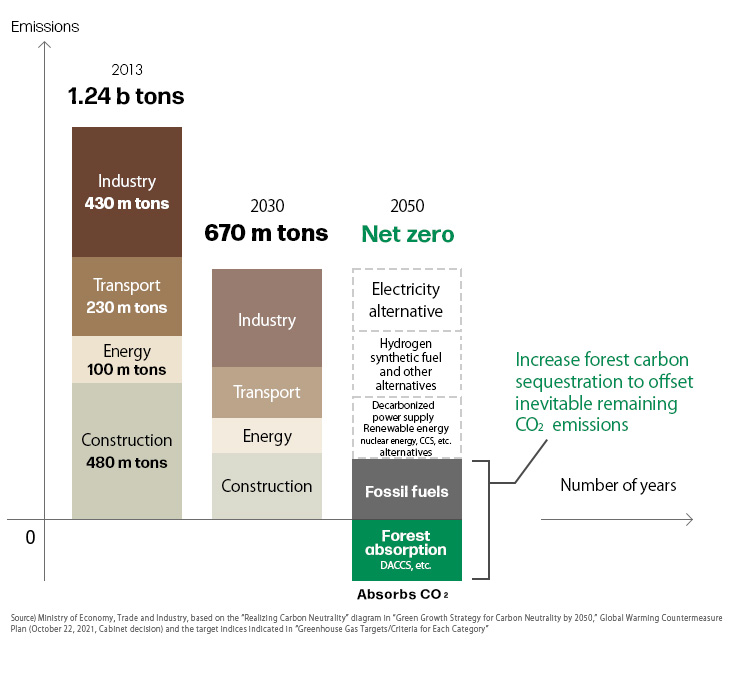
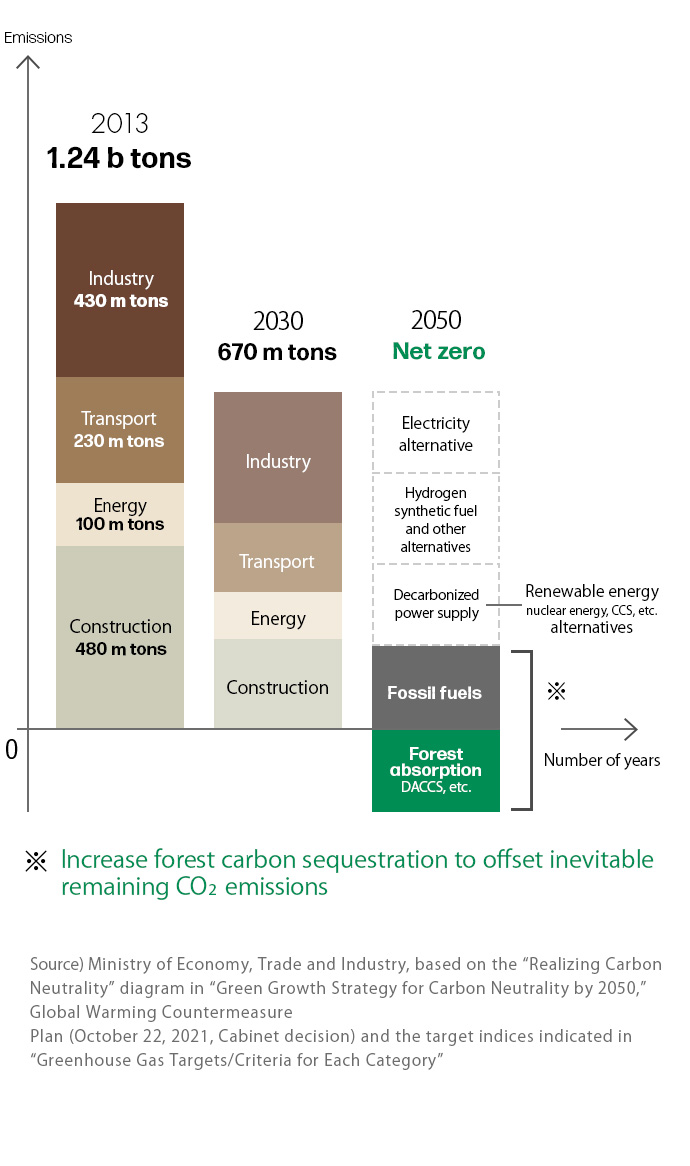
Increase CO₂ absorption through a cycle of harvesting, manufacturing, processing and replanting
Deforestation due to forest fires and farmland conversion is causing significant CO₂ emissions worldwide, making it important to conserve forests. On the other hand, working forests in Japan that were planted after World War 2 are now at their prime age for harvesting, with about half being more than 50 years old. Because the volume of CO₂ that trees absorb declines with age, it is important to increase CO₂ absorption by promoting forest rejuvenation through appropriate harvesting and replanting.
The world’s forest areas are decreasing
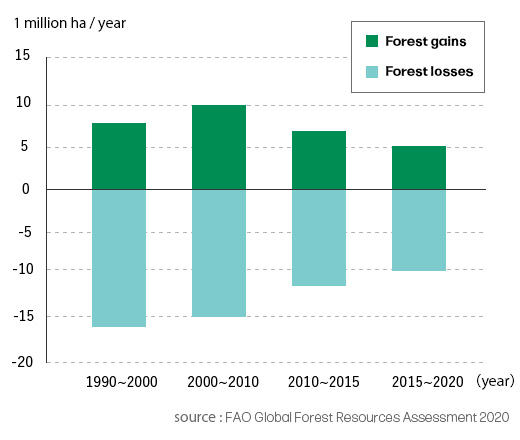
Change in CO₂ absorption with forest age
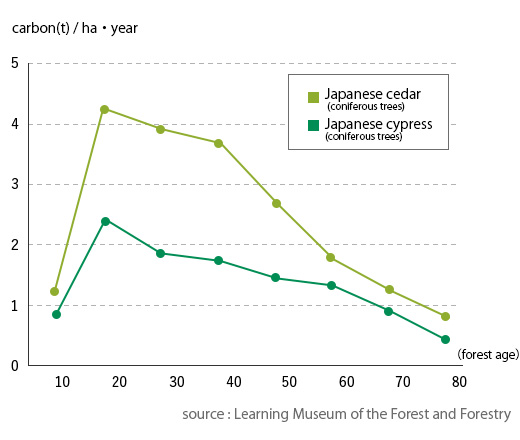
Utilizing wood for houses and other applications stores carbon for a long time.
Trees absorb atmospheric CO₂ through photosynthesis and store it as carbon. When trees are harvested and used to make timber or other wood products, they continue to store carbon. Utilizing wood for wooden structures, furniture and other objects stores carbon for a long time without CO₂ emissions. In addition, when thinnings and woodland residue are used as fuel for biomass power generation, they serve as an alternative to fossil fuels.
Carbon cycle and carbon storage period
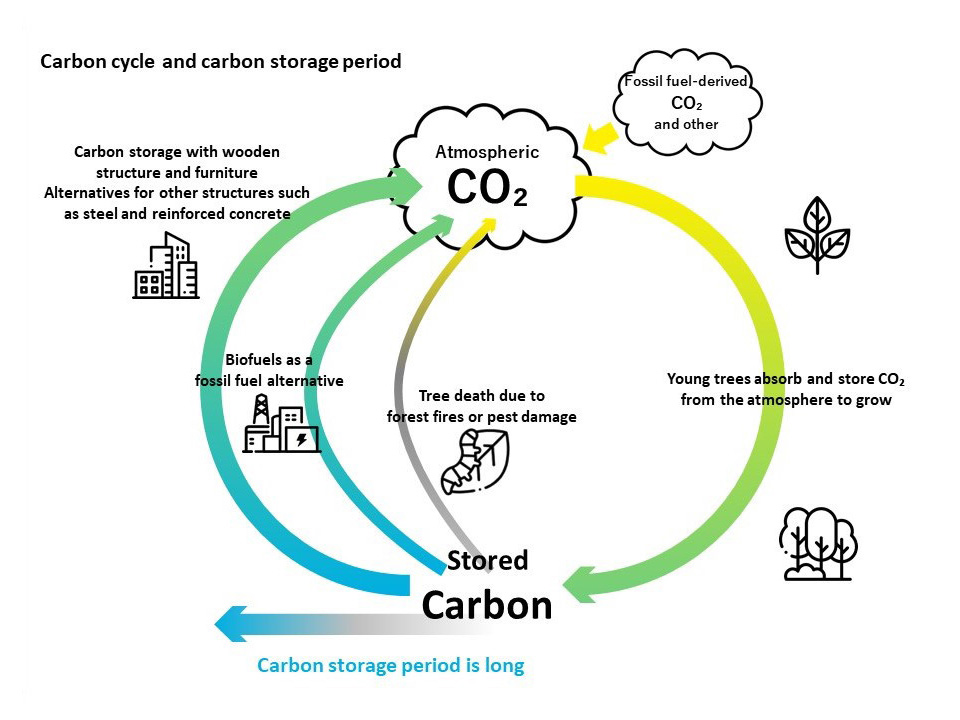
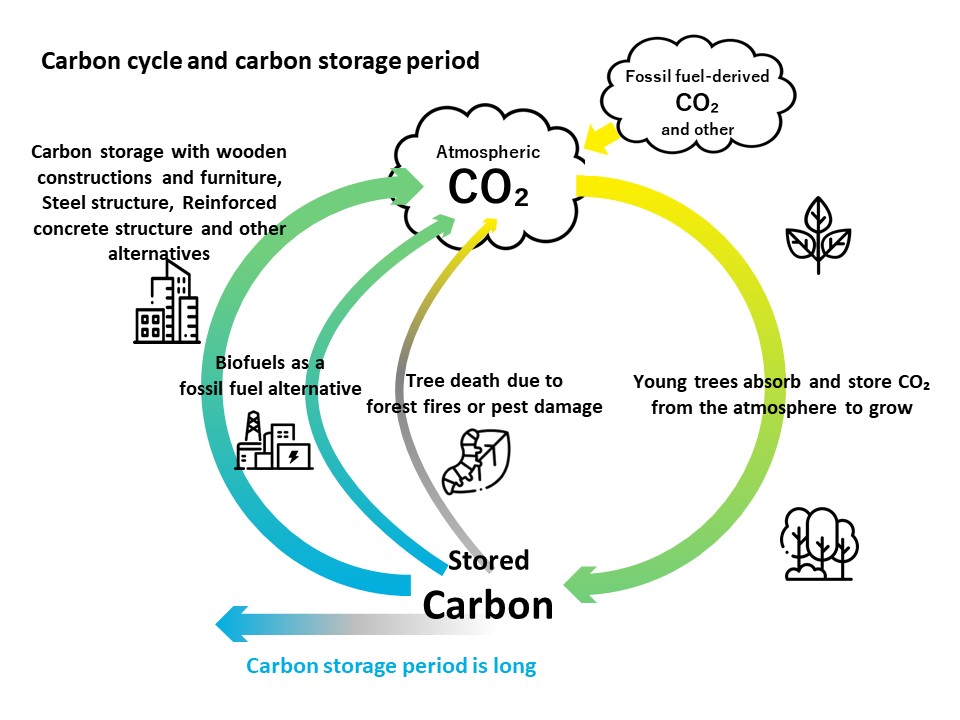
Sumitomo Forestry Group initiatives
Sumitomo Forestry Group is engaged in a broad range of businesses centered on wood, including forestry management, distribution, wooden building construction and biomass power generation. We call this unique value chain the Wood Cycle, as represented in this diagram. Through this Wood Cycle, which increases CO₂ absorption levels of forests, promotes carbon fixation of wood and stores carbon for long periods of time with wooden structures, we are striving to contribute to the realization of a decarbonized society. Through our business activities, we want to contribute to CO₂ absorption and storage not only for our own company, but for the whole of society as well.
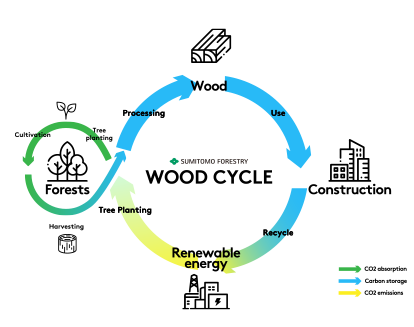
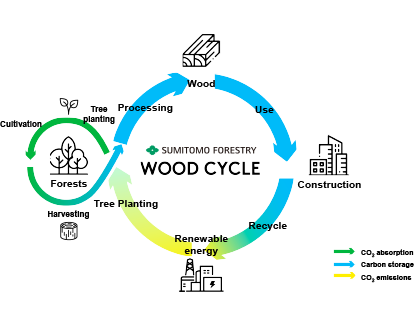
「Mission TREEING 2030 Phase 1」
Three years to build the foundation
for future growth and decarbonization
Mission TREEING 2030 Phase 1 is our new Medium-Term Management Plan.The three years of our new Medium-Term Management Plan are positioned to build a foundation for future growth and decarbonization.

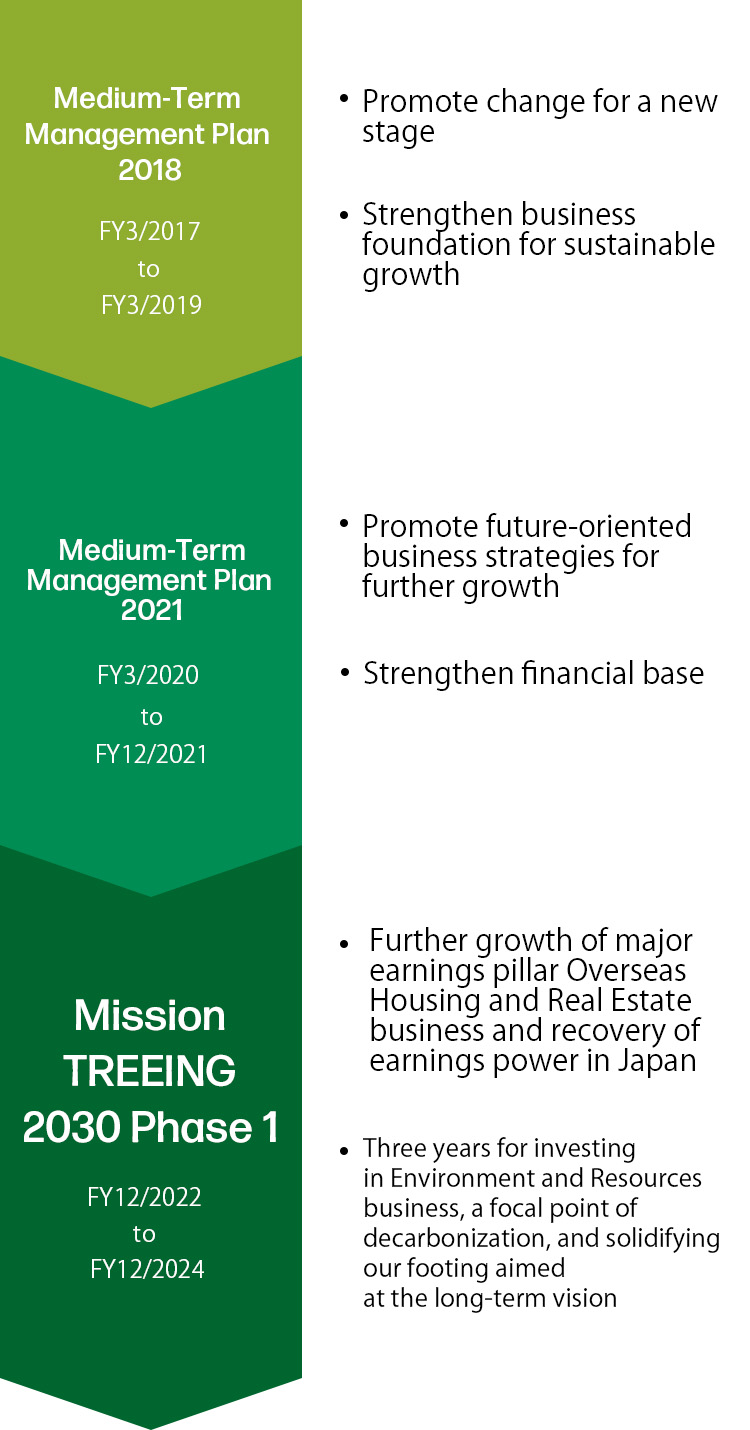
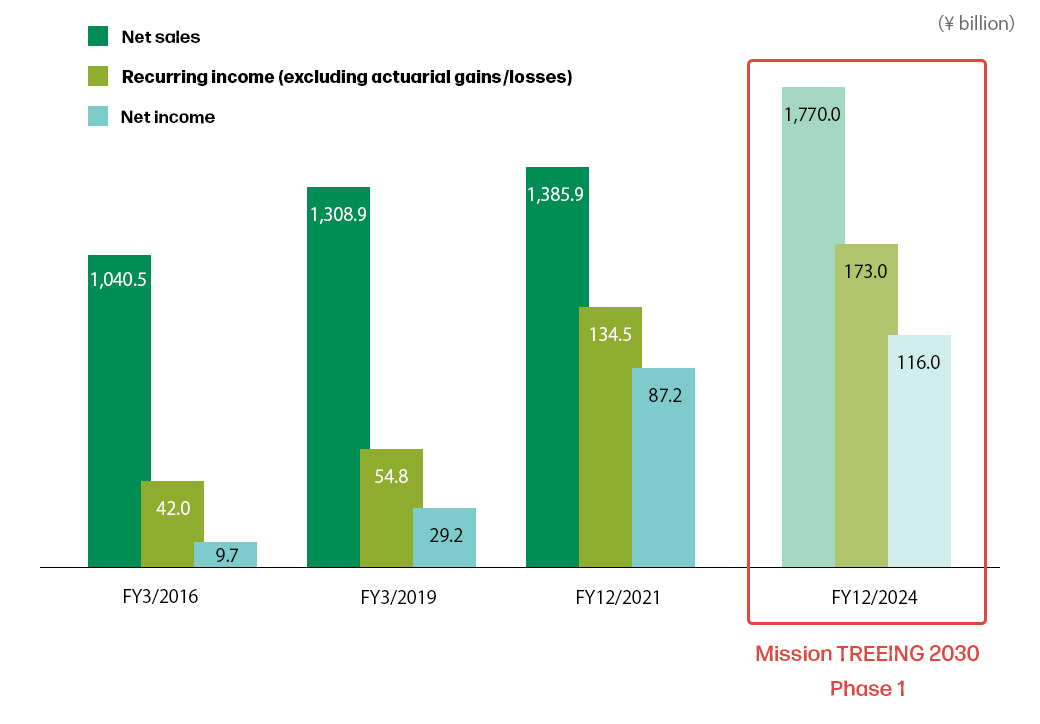

Long-Term Vision and Medium-Term Management Plan
(Movie)
Announcing the formation of a forestry fund
aimed towards decarbonization and biodiversity conservation
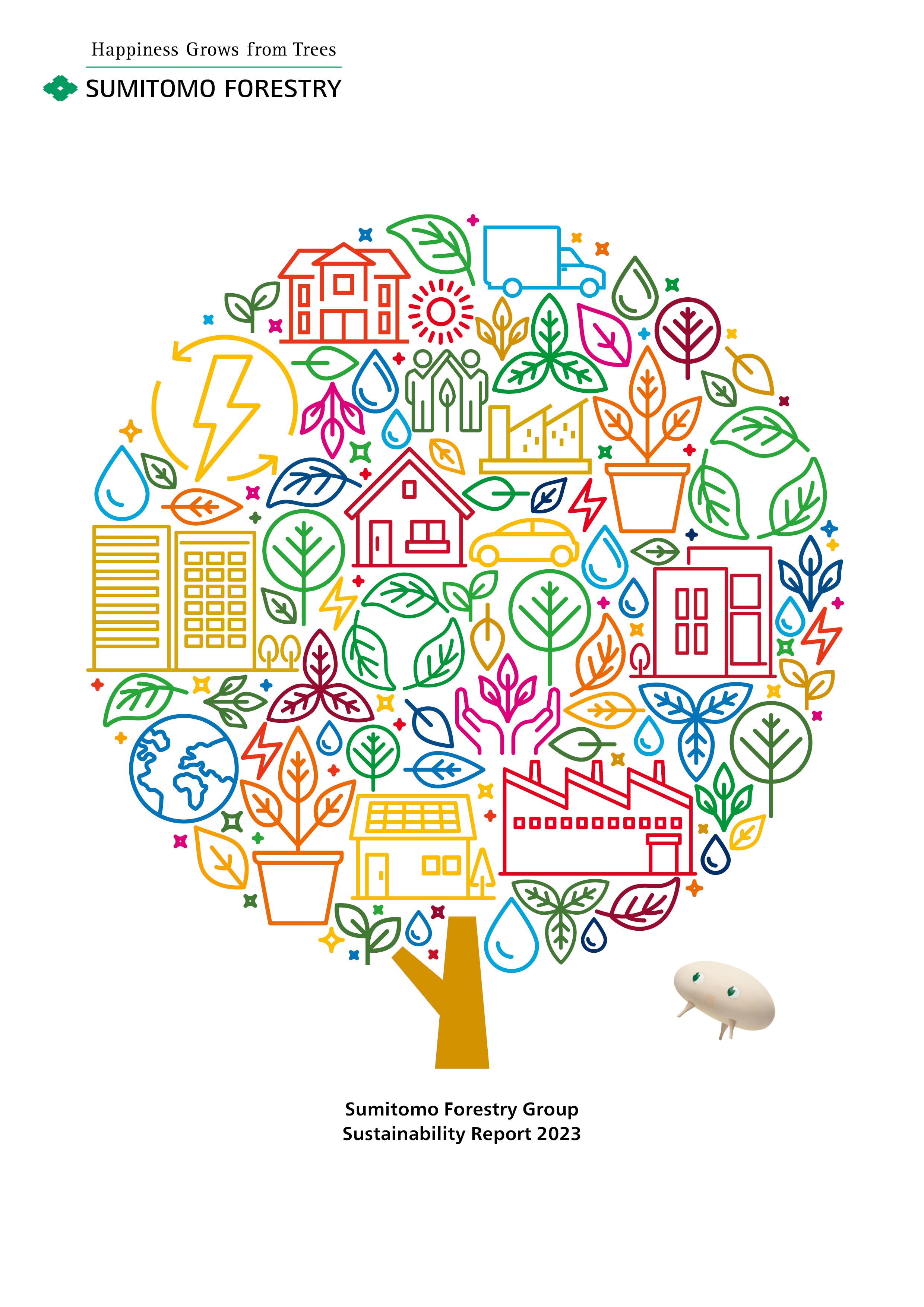
Sustainability Report
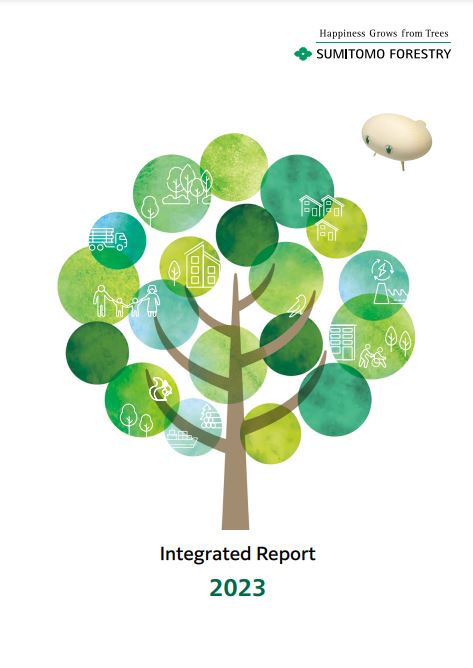
Integrated Report / Annual Report

